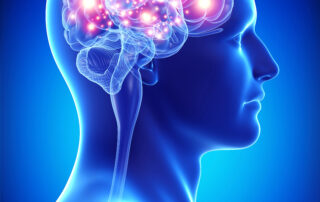Imposter Syndrome: Why High Achievers Feel Like Frauds
Imposter syndrome is a psychological experience where individuals constantly experience self doubt, dismiss their successes and often feel like a fraud when they accomplish something. Those who struggle with imposter syndrome tend to chalk up their success to external factors,
Neuroplasticity: The Brain’s Ability to Heal and Grow
Our brains are incredibly adaptable. From recovering from injuries to learning new skills, our brains have the remarkable ability to change and reorganize. This phenomenon is known as neuroplasticity. Whether you're a child learning how to walk or an adult
The Gut-Brain Axis Explained: Why Your Stomach and Mind Are Deeply Connected
Oftentimes we hear the phrase “your gut is your second brain”, but what exactly does this mean and why is it important? This saying refers to the gut-brain axis—the complex, bidirectional communication network between the gut and the brain. Recognizing
Deep Sleep and Brain Health: Why It Matters and How to Improve It
Good sleep isn’t just about rest—it’s about giving your brain a chance to reset and recharge. Deep sleep, in particular, plays a critical role in maintaining your brain's health and function. Let’s dive deep into the link between deep sleep
The Connection Between Creativity and Mental Health
Creativity is often seen as a form of self-expression, a way to communicate ideas, emotions, and perspectives that might otherwise remain unspoken. But beyond the realm of art, music, writing, or any other creative outlet, creativity plays a significant role
Neurofeedback for Autism Spectrum Disorder: A Personalized Approach to Improving Daily Life
Autism Spectrum Disorder (ASD) is a neurodevelopmental condition that impacts individuals in unique ways, often affecting communication, social skills, and sensory processing. While conventional treatments such as speech therapy, occupational therapy, and Applied Behavior Analysis (ABA) are widely known, neurofeedback






